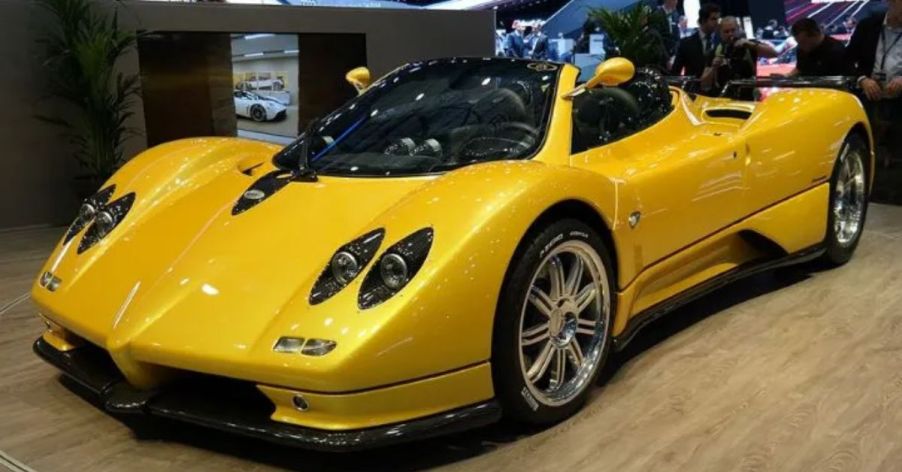
15 Sports Cars That You Should Not Be Driving

Besides looks, we often celebrate sports cars for their performance, speed, and engineering. However, their power can also lead to dangerous situations, especially when drivers push the limits. Here are ten hazardous sports cars you should think twice before driving; their minimal safety features, high accident rates, and notorious crash histories are disturbing.
Koenigsegg CCX

The Koenigsegg CCX’s twin-supercharged V8 makes it blisteringly fast, but it’s dangerously unstable due to poor downforce. This flaw was unmasked when Top Gear UK’s “The Stig” famously lost control on the test track. When the Koenigsegg snapped, Stig counter-steered for control, but the tires gripped, and it understeered into the runoff area, crashing into a tire wall.
Porsche Carrera GT

A supercar with a 600-HP V10 engine, carbon fiber body, and mid-engine layout sounds cool until you discover it’s the Porsche from Paul Walker’s fatal 2013 crash. The Carrera GT is notorious for its raw power, especially on the track. However, its unforgiving design and the absence of stability control make you reconsider stepping on the accelerator.
1986 Ford RS200

Ford designed the RS200 to dominate Group B rallies and installed a 1.8-liter turbo engine with 450 HP. Although the lightweight RS200 was brutally fast, it wasn’t easy to handle on the circuit. The supercar was banned from Group B after a fatal crash at Rally Portugal in 1986 highlighted its dangers.
TVR Cerbera Speed 12

While TVR is less famous than Maclaren, Aston Martin, or Jaguar, the Cerbera Speed 12 makes it one of Britain’s top manufacturers. Its 800-HP V12 has a brutal acceleration that makes it nearly uncontrollable. During testing, even TVR’s chief engineer found it too wild. Considering its raw power, the absence of driver aids like ABS is alarming.
1994 Dodge Viper RT/10

Only a daredevil would floor the pedal of Dodge’s Viper RT/10. This beast had an 80-liter V10 engine generating 400 HP but lacked basic safety features—no traction control, ABS, or airbags. Shocking! Its lightweight design and immense torque made it a handful, even for seasoned drivers, and crashes often happened due to its brutal power delivery.
Shelby Cobra Super Snake

After Carroll Shelby completed his 800-HP twin-supercharged 427 Cobra, Bill Cosby convinced him to build another. Shelby reluctantly agreed. Overwhelmed by the Super Snake’s extreme performance, the famous entertainer sold it to wealthy enthusiast Tony Maxey. During a high-speed run, Maxey drove it off a cliff into the Pacific Ocean. He passed away from injuries days later.
2001 BMW M3 (E46)

This German car has a disturbing record of high-profile crashes. Despite its impressive performance, the E46 M3’s handling was disappointing when pushed too hard. Its aggressive rear-wheel-drive setup and stiff suspension made it prone to snap oversteer, especially in wet conditions. Even the most skilled drivers are wary of this BMW.
1985 Ferrari 288 GTO

The Ferrari 288 GTO has a 400-HP twin-turbocharged V8 with lightweight Kevlar and fiberglass body for aerodynamics. Though street-legal, this speed demon crashed too often. Despite this reputation, F1 legend Niki Lauda, who had crashed once, requested a special unit. Five months after Ferrari released the “last” 288 GTOs, he got the final unit ever made.
1984 Pontiac Fiero

General Motors’ first mid-engine sports car was a disaster waiting to happen. Its 2.5L Iron Duke engine was prone to oil leaks and connecting rod failure and could cause a fire if the oil ran low. By 1986, over 100 fires were reported, with 20 monthly in 1984 models. Despite its appeal, the recalls and lawsuits caused early discontinuation.
1971 De Tomaso Pantera

Only skilled drivers can drive the De Tomaso Pantera to its full potential—the fragile electrics and rear-based weight distribution made driving unsafe, leading to several avoidable crashes. Though exotic, this Italian-American sports car was also prone to overheating and electrical issues. Elvis Presley even famously shot his Pantera when it wouldn’t start.
Pagani Zonda

In 1999, Pagani stunned the world when it released the Zonda, whose monstrous Mercedes-Benz V12 complemented its wild design. Yet, its handling was treacherous, with unpredictable oversteer and understeer. Even Lewis Hamilton called it the worst car he’d ever driven after crashing his $1.6 million Zonda 760lh in Monaco. It was thrilling but dangerous!
Porsche 930 Turbo

When you’re nicknamed the “Widowmaker,” you have serious issues. The Porsche 930 Turbo has a notorious turbo lag that may mean lights out if caught off guard. Due to rear weight bias, it constantly oversteers and rockets out of the tracks. Despite its potent power, the car’s technology doesn’t match the horsepower produced.
RUF CTR Yellowbird

Inexperienced drivers should avoid the CTR because of its immense power and unpredictable turbo lag. RUF built it by turning a lightweight 3.2 Porsche 911 Carrera into a 3.4 beast. After installing fuel injection from a Porsche 962 prototype race car, they added turbochargers. The result? The world’s fastest production car at 213 mph.
1991 Acura NSX

The 1991 Acura NSX was a technological marvel with its 270-HP V6, but it was dangerous. Its lightweight body and precise handling could lead to sudden oversteer, catching drivers off guard. Several crashes, including a notable incident during a magazine test, highlighted its risks. Its gas tank placement behind the seats also had fire concerns.
1994 Mazda RX-7

Mazda’s 1994 RX-7 had a lightweight design and 255-HP twin-turbo rotary engine, perfect for thrilling rides. However, the Japanese sports car’s rear-wheel-drive layout and turbo lag were major issues. If you have no idea how to drive, maintain, or service rotaries, you’d be better off without this. Control may also be challenging, especially in wet or slippery conditions.


